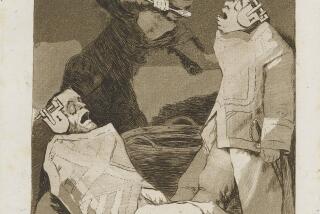Coming to Terms With the 20th Century
Our planet at the year 2000 is a kaleidoscope of disparate images: The simple joy of children playing baseball in Cuba. Crowds of Albanian refugees pressed against a torn fence near Kosovo. The anguish of Japanese women remembering the first atomic bomb at Hiroshima, and the similar torment of a Vietnamese woman who lost 15 family members in the massacre at My Lai.
The world has indeed become a global village: more crowded than ever, united by technology and commerce, yet still fragmented by competing ideologies and deep-rooted problems.
Times photographer Gary Friedman traveled to 18 nations in every hemisphere to chronicle the state of planet Earth at the end of the second millennium. He found elation and heartache, hope and anxiety for the future, and poignant reflections on the past.
He was struck by the changing landscape of political divisions. In war-torn Northern Ireland, a man and woman took comfort in one another as police patrolled in riot gear. Blacks in South Africa lined up to vote for the second time ever in national elections, their stolid faces reflecting the grim fight behind them. At the former site of the Berlin Wall in Germany, a couple paused in the rain to study the simple memorial to the many who had died trying to flee the East German Communist regime.
It was sobering to contemplate the bitter Cold War that the wall represented during its brief life, from 1961 to 1989: a time when guards stood ready with guns to slaughter the men and women who dared to run for freedom, a time of Vietnam and the arms race, with the world poised on the brink of nuclear war.
The rapid change within the old Iron Curtain nations was most visible in Russia. During Friedman’s last visit, nine years ago, he saw consumers waiting in line for basic staples--milk, sugar, clothing. Now there were neon signs, McDonald’s and gambling casinos. A simple scene on the street--a young woman in heels passing an old woman in boots--seemed to symbolize the remarkable transformation of the old Soviet Union.
On Oct. 1, in one of Communism’s last strongholds, thousands gathered to celebrate the 50th birthday of the People’s Republic of China. They did it by marching in Tiananmen Square, scene of the bloody quashing of a pro-democracy demonstration a decade earlier. Cuba was an even more stunning spectacle: a nation stuck in a time warp, filled with crumbling structures, dirt streets and automobiles from the 1950s. It occurred to Friedman that the warm people of the island still have their Berlin Wall: the sea that separates them from the Florida coast.
A tremulous world is still fraught with change, tension and hardship. Panama reclaimed its celebrated canal. At the Western Wall in Jerusalem, where nations still fight over the Holy Land, a solitary man worshipped in a white shirt and fedora. Impoverished children in Brazil were camped on street corners. At a remote stretch of border between Mexico and Arizona, would-be immigrants were stopped by U.S. guards after a woman broke her ankle crossing a fence. And in AIDS-ravaged Africa, a woman nearing death sat solemnly in her grass hut with her children, soon to be motherless.
It seemed especially fitting, at the close of a century unlike any other, to pause and remember. Certainly, there was no shortage of those images: A young child gazing at video footage of Dr. Martin Luther King. A sprawl of flowers honoring the murdered students at Columbine High School. A haunting display in a museum at Auschwitz--a mountain of discarded shoes of the dead.
Friedman strolled among the cemetery crosses in Normandy, France. Fifty-five years after the World War II invasion of Omaha Beach--one of the bloodiest and most pivotal battles of this or any millennium--he met a former G.I. who had taken part in the offensive, and who was returning there for the first time. Elegantly coiffed and dignified in his 70s, the former soldier--one of the true living heroes of this extraordinary age--made his way onto the beach and scooped souvenir sand into a small plastic bag.
More to Read
Sign up for Essential California
The most important California stories and recommendations in your inbox every morning.
You may occasionally receive promotional content from the Los Angeles Times.










